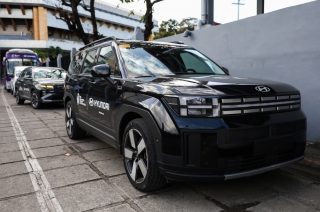
You probably have heard about the most recent accident in Sta. Rosa-Tagaytay Road in Laguna, which took the lives of six people, two of which are kids who are one month old and two years old. This is just one of the many fatal accidents happening on the road yearly. Innocent lives are becoming the sacrifices of negligence of road laws – and this is what alarms the World Health Organization (WHO) right now.
According to a new report from WHO, traffic deaths continue to rise, as annual count reached 1.35 million. The organization’s Global status report on road safety 2018 indicates that traffic injuries have become the primary killer of children and young people aged 5 to 29. However, despite the increase in death counts, the rates were said to have become stable relative to the size of global population. According to WHO, this means that efforts in middle and high-income countries are paying off.
“These deaths are an unacceptable price to pay for mobility There is no excuse for inaction. This is a problem with proven solutions. This report is a call for governments and partners to take much greater action to implement these measures.”
WHO Global Ambassador for Noncommunicable Disease and Injuries Michael R. Bloomberg, on the other hand, stated that strong policies and enforcement, smart road design, and powerful awareness campaigns are what should be looked forward to in able to save millions of lives on the coming years.
In fact, better legislations relating to speeding, drinking, driving, among others are largely attributed in countries where progress have been observed. In addition to these, safer infrastructure such as sidewalks, bicycles and motorcycle lanes, stricter vehicle standards, and improved post-crash care are also needed to help lower traffic injuries to deaths.
On the other side of the spectrum, however, not a single low-income country demonstrated progress in overall deaths. Worse is that traffic deaths remain three times higher in these countries, with Africa holding the highest rate, while the lowest is said to be Europe. Meanwhile, America, Europe, and Western Pacific showed a decline in road-related deaths.
There are variations of traffic deaths has also been laid out by WHO. 26% of these deaths are accounted from pedestrians and cyclist in global standpoint. This is not the case for Africa as it is higher at 44% and 36% in the Eastern Mediterranean. Motorcycle riders and passenger, on the other hand, account for 28% of global road-related deaths. Again, this is higher for some regions like Southeast Asia and Western Pacific, which rate 43% and 36%, respectively.
Latest News
-
Geely’s EX2 EV headed to Australia — is a Philippine launch possible? / News
The Geely EX2 is confirmed to go on sale in Australia in 2026. Could a launch in the Philippines also be on the cards?
-
Hyundai Motor Philippines is the FIFA Futsal Women's Teams' official mobility partner / News
Hyundai Motor Philippines strengthened its partnership with FIFA through its support of the FIFA Futsal Women's Teams.
-
Kia Philippines backs EJ Obiena as Atletang Ayala continues championing Filipino athletes / News
Kia Philippines strengthens its support for EJ Obiena, backing the Olympian with dedicated mobility at home and abroad.
Popular Articles
-
Electric Vehicles in the Philippines for under P1 million
Jerome Tresvalles · Aug 19, 2025
-
Top 3 Cars For Every Lifestyle—What Cars Are Right For You? | Behind a Desk
Caco Tirona · Apr 24, 2024
-
5 Tips to Maximize Fuel Efficiency
Jerome Tresvalles · Sep 09, 2024
-
Five driving habits that are draining your fuel tank
Jerome Tresvalles · Jun 24, 2025
-
Can engine braking harm your engine?
Jerome Tresvalles · Sep 11, 2025
-
Do electric cars even need maintenance?
Jerome Tresvalles · Oct 23, 2024
-
Best vehicles for an active outdoor lifestyle
Shaynah Miranda · Jul 25, 2024
-
How to drive different types of vehicle transmissions
May 23, 2024
-
5 easy ways to keep your car interior clean
Allysa Mae Zulueta · Nov 15, 2021
-
How to survive Metro Manila traffic
Earl Lee · Aug 16, 2022



